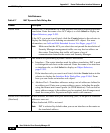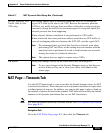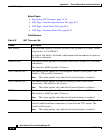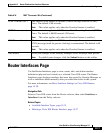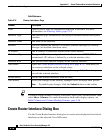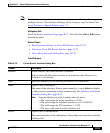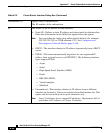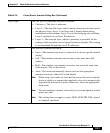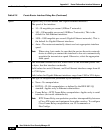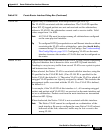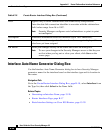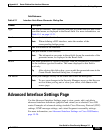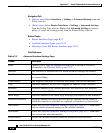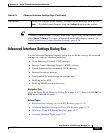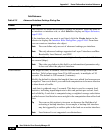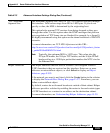
Appendix K Router Platform User Interface Reference
Router Interfaces Page
K-22
User Guide for Cisco Security Manager 3.2
OL-16066-01
Speed Applies only to Fast Ethernet and Gigabit Ethernet interfaces.
The speed of the interface:
• 10—10 megabits per second (10Base-T networks).
• 100—100 megabits per second (100Base-T networks). This is the
default for Fast Ethernet interfaces.
• 1000—1000 megabits per second (Gigabit Ethernet networks). This is
the default for Gigabit Ethernet interfaces.
• Auto—The router automatically detects and sets appropriate interface
speed.
Note When using Auto mode, be sure that the port on the active network
device to which you connect this interface is also set to automatically
negotiate the transmission speed. Otherwise, select the appropriate
fixed speed.
MTU The maximum transmission unit, which refers to the maximum packet size,
in bytes, that this interface can handle.
Valid values for serial, Ethernet, and Fast Ethernet interfaces range from 64
to 17940 bytes.
Valid values for Gigabit Ethernet interfaces range from 1500 to 9216 bytes.
Encapsulation The type of encapsulation performed by the interface:
• None—No encapsulation.
• DOT1Q—VLAN encapsulation, as defined by the IEEE 802.1Q
standard. Applies only to Ethernet subinterfaces.
• Frame Relay—IETF Frame Relay encapsulation. Applies only to serial
interfaces (not serial subinterfaces).
Note IETF Frame Relay encapsulation provides interoperability between
a Cisco IOS router and equipment from other vendors. To configure
Cisco Frame Relay encapsulation, use CLI commands or
FlexConfigs.
Table K-10 Create Router Interface Dialog Box (Continued)



